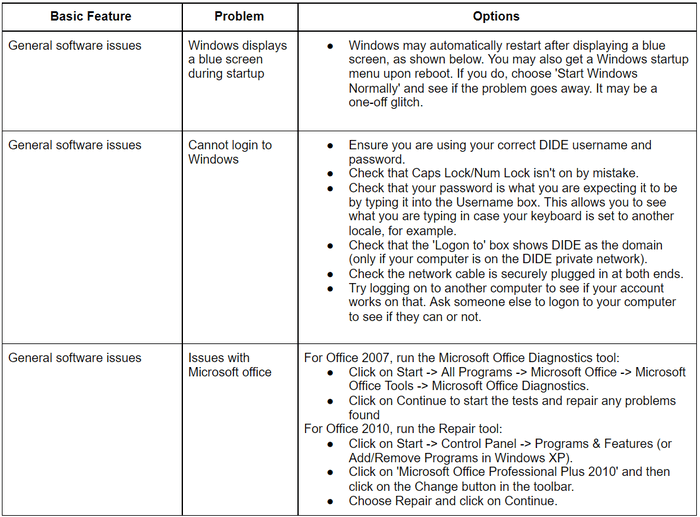
Every business dreams of smooth running every day without interruptions. So that everything worked exactly as it should and there would be no stoppages to the day-to-day functions. But, there comes a time when something will go wrong at some point.
And sometimes this requires the employees to solve problems. Most commonly, this is a troubleshooting situation. The importance of documentation in troubleshooting cannot be overstated. It is not a nice-to-have; it is a must-have. Detailed and well-written documentation can save you from serious troubles.
What Is a Troubleshooting Guide?
A troubleshooting guide is a structured set of guidelines that lists common problems and offers problem-solving to failed products or processes on a mechanism or a system. This guide is a type of technical documentation.
Troubleshooting helps identify the symptoms, eliminate the potential cause of the problem, and require confirmation that the solution restores the product or process to its working state.
Any troubleshooting expert will tell you the importance of documentation in troubleshooting and how it is impossible not to have it or have a useless set of guidelines.
Why Is Troubleshooting Important?
The importance of troubleshooting documentation must not be undermined, and every company that seeks sustainability must place enough importance on well-written and constantly updated documentation.
- It is unwise to rely solely on memory and experience in troubleshooting. Customers want the very best in troubleshooting documentation, too, and the lack of it can be viewed as incompetence.
- Troubleshooting documentation explains the technical jargon so that anyone reading it can understand what would need to be done in case of a particular problem.
- Explicitly worded documentation is vital to improve efficiency. So, even if memory fails under pressure, the troubleshooting staff can quickly recover from that by referring to the documentation.
- The importance of documentation in troubleshooting and other areas enhances the fact that it is a recording of a crucial and creative process that focuses on problem resolution and problem prevention. It helps teams work collaboratively on customer issues or internal troubleshooting issues for quicker solutions. It provides a pathway for even a new member and customer to resolve problems.
- Neat documentation can provide valuable information for the future, remove problems and stumbling blocks for the present, and ensure quality.
- The enhanced efficiency level in troubleshooting within the customer service team increases their trust and loyalty towards the company and its brand.
- Well-written documentation leads to increased productivity and staff with a genuine feeling of self-worth since they will be dealing with happy customers.

How to Write a Troubleshooting Guide?
If you are getting started writing a troubleshooting guide, consider these six things for each procedure:
- Make a list of common troubleshooting scenarios that you can address first.
- Identify the problem. The problem could be as obvious as an error code popping up on the screen or something more user experience-based, like a computer shutting down unexpectedly. Knowing the details helps you fully understand the problem and the situation surrounding it.
- Find the fastest path to resolution. Develop a series of questions that help your employees understand the scenario and lead them to the next step to resolve the issue. Narrow down the cause/resolution as quickly as possible. So it makes sense to start with general issues. The key is to ask questions in an order that takes the most direct path to resolution. You can lead with questions that are most commonly the solution and then move into questions that help determine if it is a more obscure scenario.
- Facilitate the process. Make the troubleshooting guide in a flow that the user can easily follow.
- Include visuals. While you aim to write clear and concise articles, you can also help your employees follow instructions by providing visual aids. The screenshots show the step-by-step instructions as you explain how to complete them. Having visual examples enables you to decrease the number of mistakes your employees make.
- Test it. These step-by-step guides walk your employees through a procedure and provide them with different paths so they can resolve the issue on their own. If it is done, then you created a perfect troubleshooting guide.
Example of a Troubleshooting Guide
A short, concise article can quickly guide customers to fast problem resolution. This example can help you see the structure of the basic requirements, such as defining the problem, including the affected environments, explaining the solution.

For other technical writing examples, see our article Unexpected Technical Writing Examples.
Conclusion
Not having proper and streamlined documentation, especially within the troubleshooting realm, can land you in serious trouble. Proper documentation fills in missing information, reduces usability issues, and enables the non-technical customer service staff to appear knowledgeable on technical troubleshooting matters.
Good luck with your technical writing!
ClickHelp Team
Author, host and deliver documentation across platforms and devices
 Elmirain Technical Writing on 2/24/2022 — 3 minute read
Elmirain Technical Writing on 2/24/2022 — 3 minute read Elmirain Technical Writing on 2/24/2022 — 3 minute read
Elmirain Technical Writing on 2/24/2022 — 3 minute read

